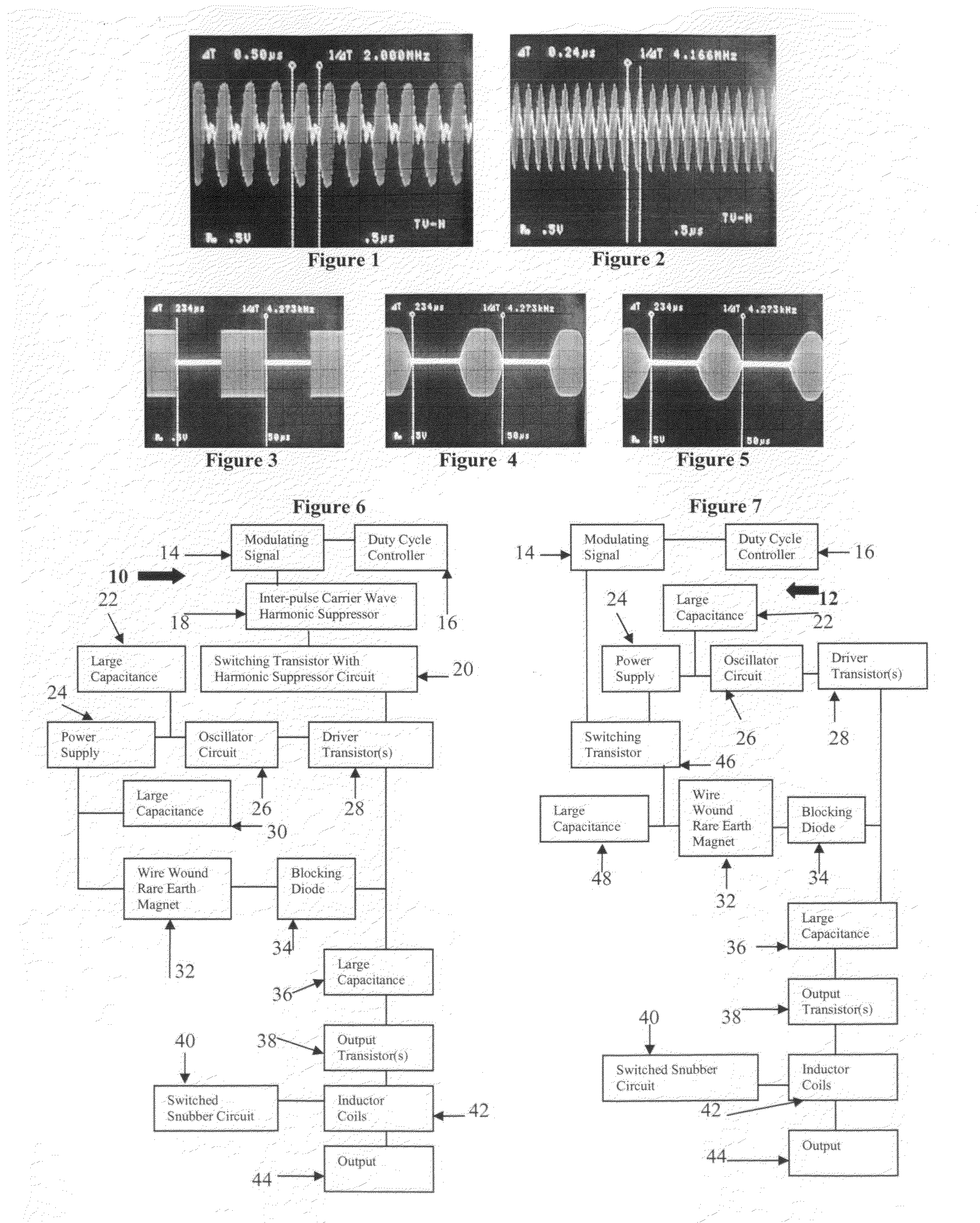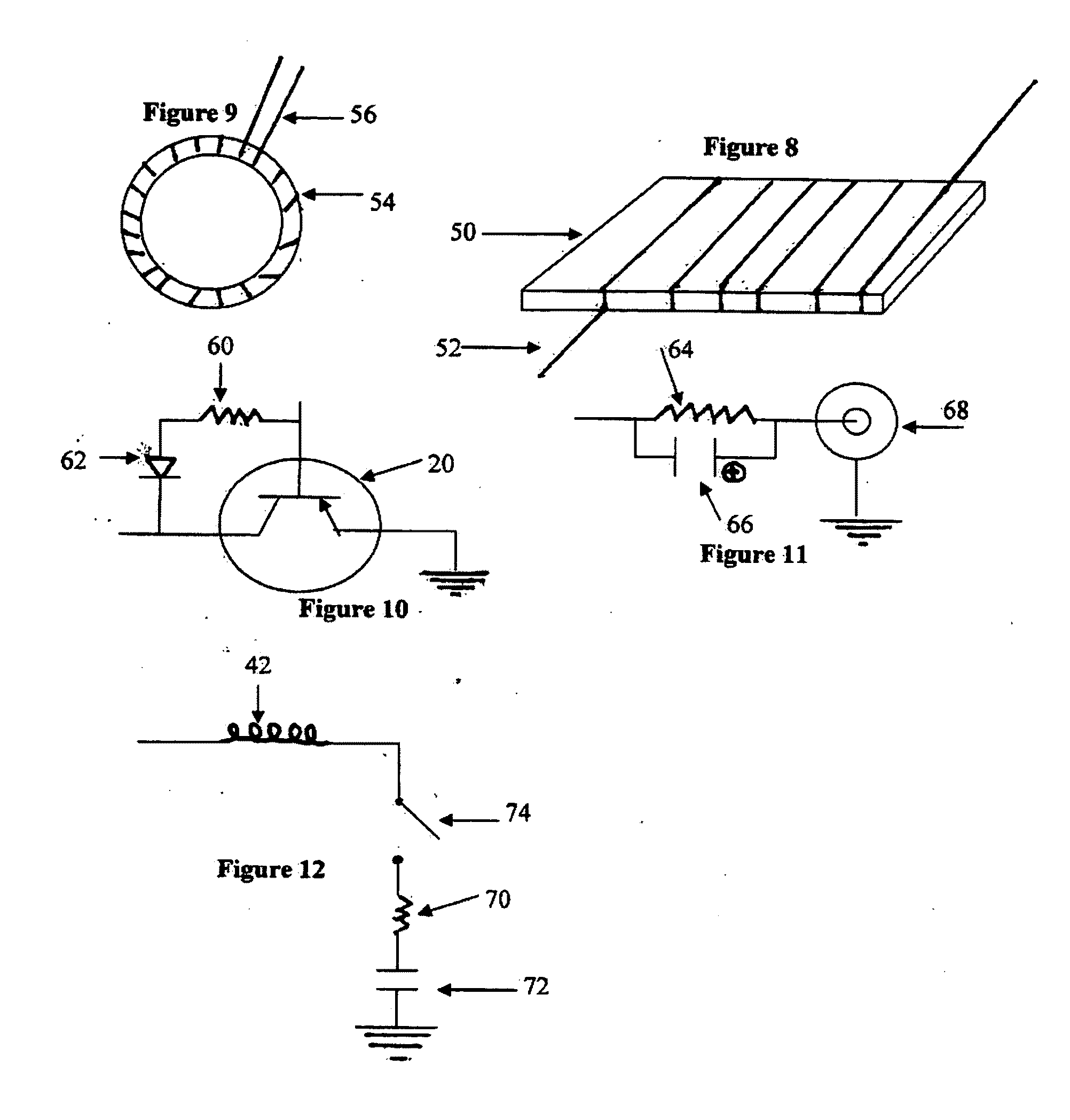Amplitude modulated pulse transmitter
- Summary
- Abstract
- Description
- Claims
- Application Information
AI Technical Summary
Benefits of technology
Problems solved by technology
Method used
Image
Examples
second embodiment
[0034]The pulse shaped, frequency response and irregularity of each carrier oscillation in the pulse is corrected by stabilizing the pulse shape at high frequencies. This is accomplished utilizing the large capacitors 22, 30 and 36 of FIG. 6 as well as the large capacitors 22, 36 and 48 of the circuit illustrated with respect to FIG. 7. It has been found that electrolytic capacitors having a range of 3300 uf to approximately 10,000 uf are added to improve the pulse shape and frequency response. The capacitor 22 in both circuits is provided in parallel to the low voltage input 24 of the power supply that powers an oscillator circuit 26. A second large electrolytic capacitor 30 having the same parameters of the capacitor 22 is provided in parallel to the high voltage input side of the circuit between the power supply 24 and the rare earth magnet 32. The large capacitor 48 of FIG. 7 is provided between the power supply 24 and the rare earth magnet 32 through a switching transistor 46. ...
first embodiment
[0040]Circuit ringing between pulses can become evident at modulation frequencies of 1 MHz and above. This is important since the range of the transmitter of the present invention can be as great as 4 MHz and above. If severe enough, the circuit ringing can cause limitation of the pulse bandwidth capability. One manner in which this situation can be alleviated would be to utilize a harmonic suppressor 18 with a switching transistor 20 in the first embodiment illustrated with respect to FIG. 6. This switching transistor along with the harmonic suppressor circuit is illustrated in FIG. 10. The switching transistor 20 is utilized with a resistor 60 and a diode 62. The resistor is approximately 12 ohms and one end is connected to the base of the switching transistor 20. The other end of the resistor 60 is attached to the anode of the diode 62. The cathode of the diode is connected to the collector of the switching transistor 20.
[0041]Another manner of controlling the circuit ringing is ...
PUM
 Login to View More
Login to View More Abstract
Description
Claims
Application Information
 Login to View More
Login to View More - R&D
- Intellectual Property
- Life Sciences
- Materials
- Tech Scout
- Unparalleled Data Quality
- Higher Quality Content
- 60% Fewer Hallucinations
Browse by: Latest US Patents, China's latest patents, Technical Efficacy Thesaurus, Application Domain, Technology Topic, Popular Technical Reports.
© 2025 PatSnap. All rights reserved.Legal|Privacy policy|Modern Slavery Act Transparency Statement|Sitemap|About US| Contact US: help@patsnap.com



